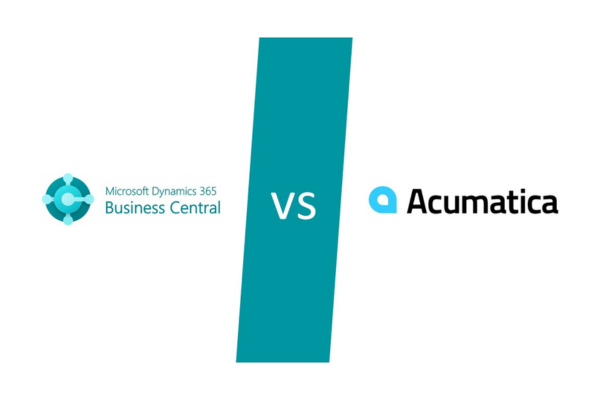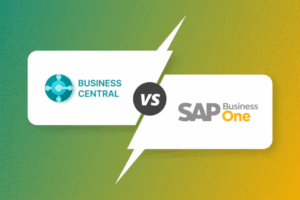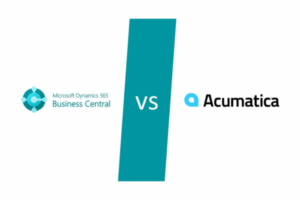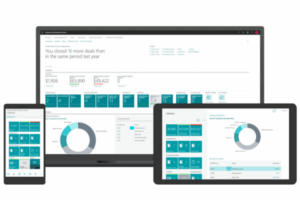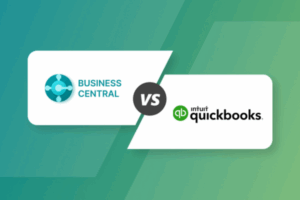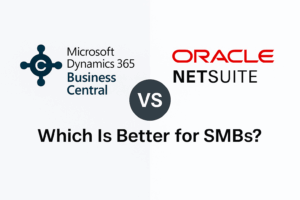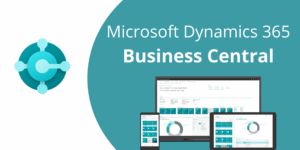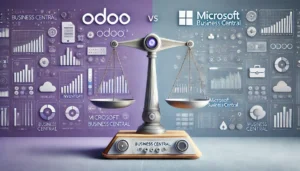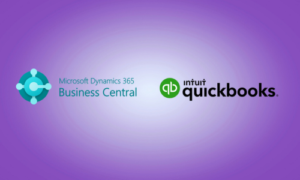Business Central vs Acumatica: Quick Snapshot
| Category | Business Central | Acumatica |
|---|---|---|
| Deployment | Cloud-first (Microsoft SaaS) | Cloud or private cloud (partner hosted) |
| Pricing Model | Per-user license ($77–$110/user/month, Oct 2025) | Resource-based pricing (unlimited users) |
| Best For | SMBs using Microsoft 365, Power BI, or Azure | SMBs needing flexible licensing or industry editions |
| Industries | Distribution, manufacturing, construction, services | Construction, manufacturing, distribution, field service, retail |
| Integrations | Deep native ties to Microsoft apps | Open APIs and strong ISV ecosystem |
| Customization | AL extensions, Power Platform tools | Built-in low-code customization and workflows |
| Implementation Network | 3,000+ global partners | Smaller, specialized partner network |
Business Central vs Acumatica: Pros and Cons
Business Central Pros
-
Microsoft ecosystem integration: Tight connection with Outlook, Excel, Teams, and Power BI.
-
Scalability: Handles multi-entity, multi-currency operations easily.
-
Predictable pricing: Per-user model simplifies budgeting.
-
Frequent updates: Two major updates each year.
-
Strong for manufacturing and distribution.
Business Central Cons
-
Limited CRM capabilities without Dynamics 365 Sales or HubSpot.
-
Add-on dependence for industry-specific needs.
-
Linear licensing costs: Price scales with user count.
-
Customizations require AL developer skills.
Acumatica Pros
-
Unlimited users: Pay for resources, not seats.
-
Industry editions: Tailored for construction, distribution, manufacturing, retail, and service.
-
Highly customizable: Built-in low-code platform for workflows and reports.
-
Flexible deployment: Cloud or private hosting options.
-
Strong vertical specialization.
Acumatica Cons
-
Complex pricing: Harder to estimate early total cost.
-
Smaller partner ecosystem: Fewer consultants and integrations than Microsoft.
-
Less brand familiarity: Some IT teams prefer Microsoft’s backing.
-
Upgrades may need more partner involvement depending on hosting setup.
Business Central vs Acumatica: Cost Comparison
| Cost Factor | Business Central | Acumatica |
|---|---|---|
| Licensing | $77 (Essentials) to $110 (Premium) per user/month (Oct 2025 pricing) | Resource-based; $2,000–$4,000/month typical |
| Implementation | $25K–$150K depending on size and modules | $30K–$175K depending on customization |
| Add-Ons & Integrations | AppSource extensions ($1K–$10K) | ISV or industry apps ($2K–$15K) |
| Maintenance & Updates | Included in SaaS plan | Included for cloud; extra for private hosting |
Bottom line:
-
Business Central = predictable, scalable pricing.
-
Acumatica = flexible licensing for companies with many light users.
Where Each System Wins
| Scenario | Better Fit | Why |
|---|---|---|
| Heavy Microsoft 365 usage | Business Central | Seamless integration with Teams, Excel, Power BI |
| Many occasional users | Acumatica | Unlimited user licensing |
| Multi-entity accounting | Business Central | Consolidation and intercompany tools |
| Construction or project-driven business | Acumatica | Industry editions with built-in project accounting |
| Desire for global vendor backing | Business Central | Microsoft’s stability and ecosystem |
Business Central vs Acumatica: Implementation and Ease of Use
If your team already lives in Microsoft 365, Business Central feels natural. The interface resembles Excel and Outlook, reducing the learning curve.
Acumatica offers deep configurability, but setup can take longer. Its low-code tools are powerful yet more technical to master.
Verdict:
Business Central wins on familiarity and adoption speed. Acumatica wins on flexibility and control.
Business Central vs Acumatica: ROI Expectations
Both ERPs deliver strong ROI when implemented correctly, but their payback patterns differ:
-
Business Central ROI: Driven by automation, Microsoft integrations, and faster reporting.
-
Acumatica ROI: Driven by flexibility and scalability across industries.
Across SMB projects, Business Central typically reaches payback in 12–24 months, while Acumatica averages 18–30 months due to greater setup complexity.
Which ERP Fits Your Business Best?
Ask yourself:
-
Are we already using Microsoft 365 or Power BI?
-
Do we need unlimited users or predictable pricing?
-
Are we in a specialized industry like construction or retail?
-
How important is global scalability and vendor continuity?
If you answered “yes” to the first two, Business Central is likely your match.
If flexibility and industry editions top your list, Acumatica might fit better.
Wrapping it Up
Business Central vs Acumatica is not about which ERP is “better” — it is about which is better for you.
Business Central shines in integration, global reach, and reliability.
Acumatica shines in customization, flexibility, and pricing freedom.
Both can deliver strong ROI if implemented by the right partner with the right expectations.
At Alchemy 365, we help SMBs navigate these choices honestly — even when Business Central is not the perfect fit.
